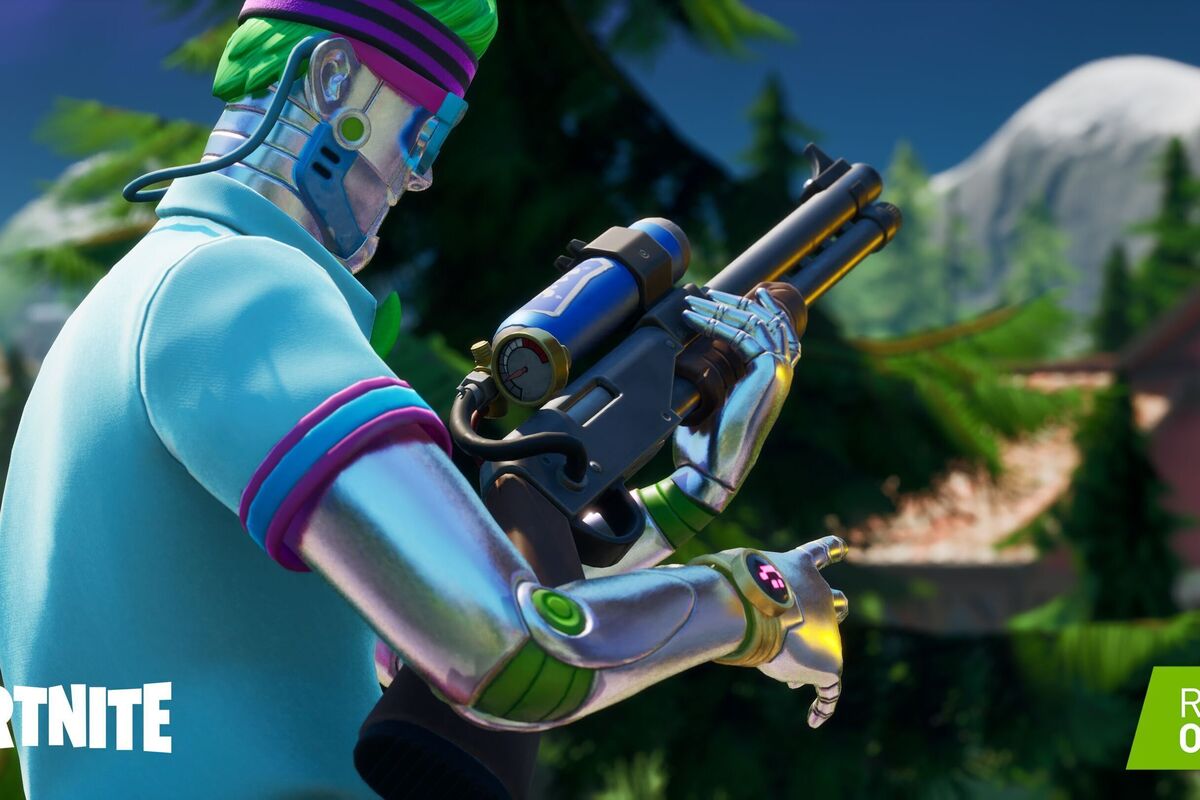[responsivevoice_button rate=”1″ pitch=”1.2″ volume=”0.8″ voice=”US English Female” buttontext=”Story in Audio”]
Fortnite flips RTX on September 17: Ray tracing, DLSS, and Nvidia Reflex

We’re mere days from the debut of Nvidia’s next-gen GeForce RTX 30-series graphics cards, with the $700 GeForce RTX 3080 scheduled to hit the streets on Thursday. And Fortnite will be right alongside it, as the world’s most popular game will add real-time ray tracing, Deep Learning Super Sampling (DLSS) 2.0, and Nvidia Reflex to Fortnite on September 17, Nvidia said Tuesday.
Nvidia previously teased Fortnite flipping on RTX during the RTX 30-series reveal, but there wasn’t a firm release date. While some games only dip their toes into real-time ray tracing with an effect or two, Fortnite is diving in, with ray traced reflections, shadows, global illumination, and ambient occlusion. Oh my. That many goodies could land Fortnite alongside Minecraft and Control as the standard-bearers for ray tracing.
Nvidia’s fantastic DLSS 2.0 technology will be introduced alongside it, to either help claim back frames lost to all those real-time rays being cast or (presumably) to boost Fortnite’s frame rates well beyond what your graphics card could normally handle if you opted not to enable ray tracing.
Fortnite will also add Nvidia Reflex, an optional new feature that Nvidia claims can greatly reduce latency in supported games, making your mouse clicks translate into on-screen actions faster. In fast-paced esports games where every millisecond counts, Reflex could be a huge advantage. Call of Duty Warzone, Valorant, Destiny 2, Apex: Legends, Call of Duty: Modern Warfare, and Call of Duty: Black Ops Cold War all plan to integrate Nvidia Reflex in the near future.
Ray tracing, DLSS, and Nvidia Reflex will all work on GeForce RTX 20-series graphics cards as well.
Between Fortnite and Minecraft, real-time ray tracing will now be supported in the world’s two most popular games. It’s also in Call of Duty, which tops sales charts year-in and year-out, and will be included in World of Warcraft’s Shadowlands expansion when it launches this October. Cyberpunk 2077 will also bake in the cutting-edge lighting technology when it releases in November.
Ray tracing and DLSS may have gotten off to a slow burn of a start, but it’s on a roll now that Nvidia’s RTX GPUs have blazed the path for the next-gen consoles, which aim to bring ray tracing to the living room masses.
If you want to learn more, check out Nvidia RTX retrospective: What two years of ray tracing and DLSS got us, and stay tuned for our review of Nvidia’s GeForce RTX 3080 Founders Edition tomorrow, September 16.
Related Nvidia RTX 30-series stories:



























